The RSI, or the Relative Strength Index, is a momentum indicator measuring the speed and magnitude of recent price changes. Quite often, when the RSI gets to extreme measures, a reversal of the current price trend is in store. Sometimes, the reversals are short-term, allowing the imbalances to moderate and the prior trend to continue. Other times, the RSI signals a long-term price change. The RSI ranges between 0-100, with a score above 70 considered extremely overbought and extremely oversold when below 30. The RSI rarely lingers in either extreme territory.
When many asset classes have extreme RSI readings at the same time, a broad shift in markets may be at hand. The graphic below shows the RSI for the S&P 500, Treasury bonds (IEF), dollar index, and crude oil (WTIC) are simultaneously in extreme overbought or oversold territory. To help project what may lie ahead in the coming weeks, the red dotted lines highlight prior instances over the last three years when the RSI was in the same extreme region for each asset. Stocks will likely reverse the recent downtrend while bond prices rise. Further, expect the dollar and oil to take a breather from their significant rallies. The question we face is whether these expected reversals are temporary or signify longer-term trend changes.
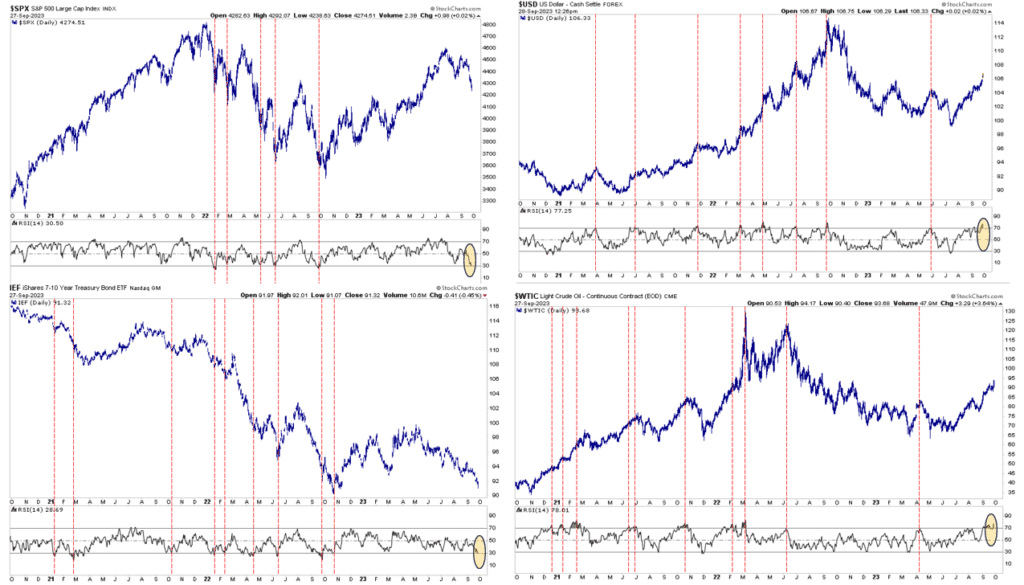
What To Watch Today
Earnings

Economy
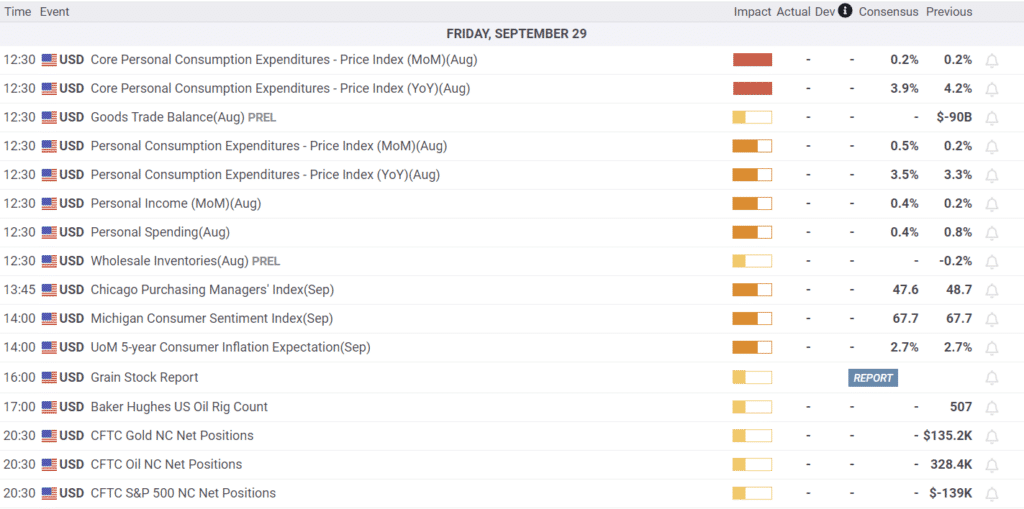
Market Trading Update
With the negative revisions to GDP, weaker-than-expected inflation from the GDP Deflator, and a deeply oversold market, both bonds and stocks rallied yesterday. The market held support at the 150-DMA with the RSI index turning up. As we have discussed over the last several days, the rather brutal selling we saw early in the week was most likely rebalancing and distributions for the fiscal year-end of professional managers. Next week starts the year’s final quarter, along with earnings season, which should give the bulls something to “chew on” over the next month or so. Use the recent sell-off to add equity exposure if needed, and use the rally into the year-end to rebalance risk and potentially raise cash before we get into the New Year.
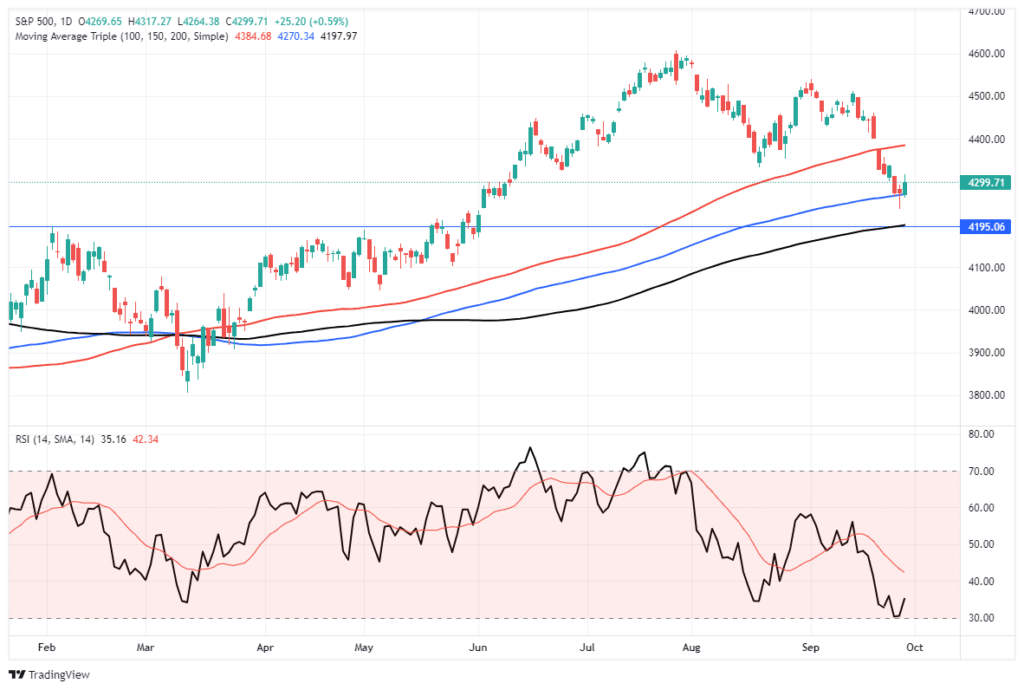

Nine Lower Lows Portend Gains Ahead
Since 1993, there have only been four times the S&P 500 had a lower low for nine consecutive days or more. The fourth instance was recorded on Wednesday. Such doesn’t mean the market was down nine days in a row. However, at one point during each of the nine trading days, it did reach a lower level than the prior day. The graph below highlights the three previous instances and the current one. In the three earlier cases, the index posted a strong performance for the next 50 trading days. As shown, two of the three also had good 20-day returns following the end of the streak. Like the current extreme RSI reading, this, too, points to a likely reversal in the coming days.
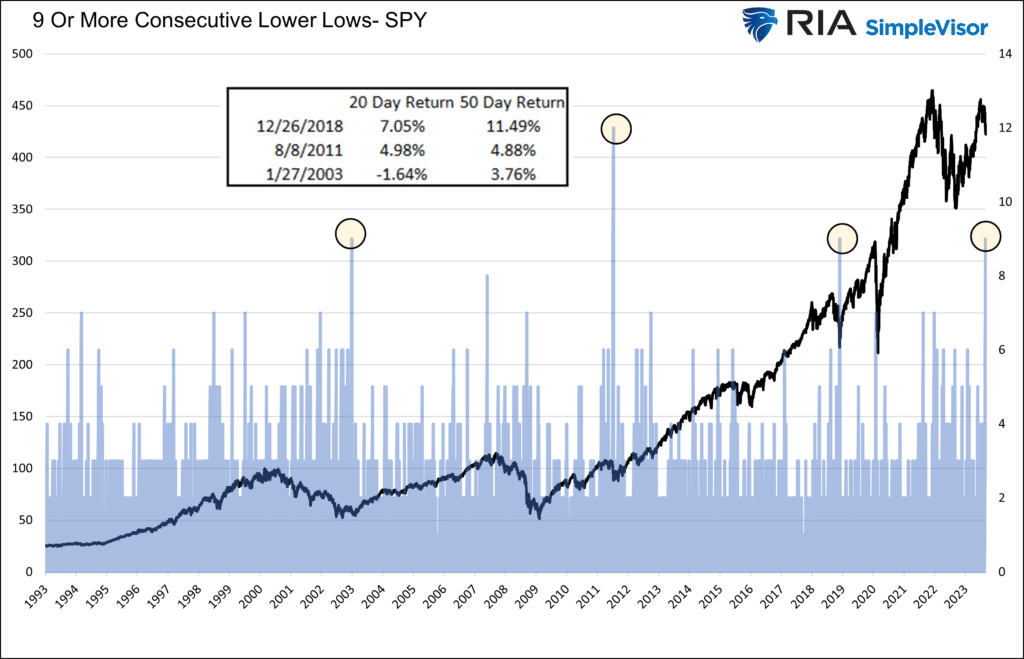
GDP Revisions Point To Weakening Consumption
The final revision of second-quarter GDP left GDP unchanged at +2.1% and up slightly from +2.0% in the first quarter. However, within the data was the weakest personal consumption growth since the second quarter of 2020. The initial Q2 consumption growth was +1.7%. The final revision brought it down to +0.8%. The reduction in personal consumption was partially offset by a reduction in the price index from +2.0% last revision to +1.7%. The graph below shows the importance of personal consumption. It is consistently responsible for over two-thirds of GDP.
The inflation deflator to calculate real GDP from nominal GDP is the PCE price index. Today, the PCE price index for August is expected to show core prices rising 0.2% for the month and +3.9% year over year. If so, PCE will be below where it was before the Fed started hiking rates in 2022.

Housing (Un)Affordability
The graph below, courtesy of the Atlanta Fed, shows housing affordability is now worse than the housing boom in the mid-2000s. Higher interest rates and home prices are predominately responsible for the decline. The Home Ownership Affordability Monitor also provides affordability data by region, as shown in the second graphic. The site allows you to scroll over each region and get a breakdown of the affordability factors. For instance, Houston- The Woodlands- Sugarland, Texas, has an annual total mortgage payment share equating to 40.7% of income. The model assumes median income and home prices along with current mortgage rates, taxes, and insurance.
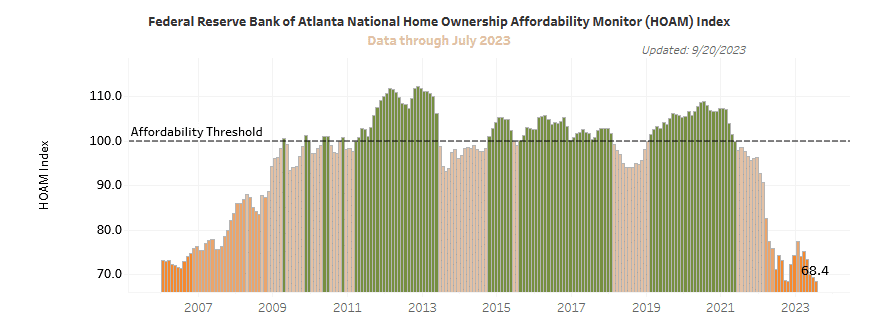

Tweet of the Day
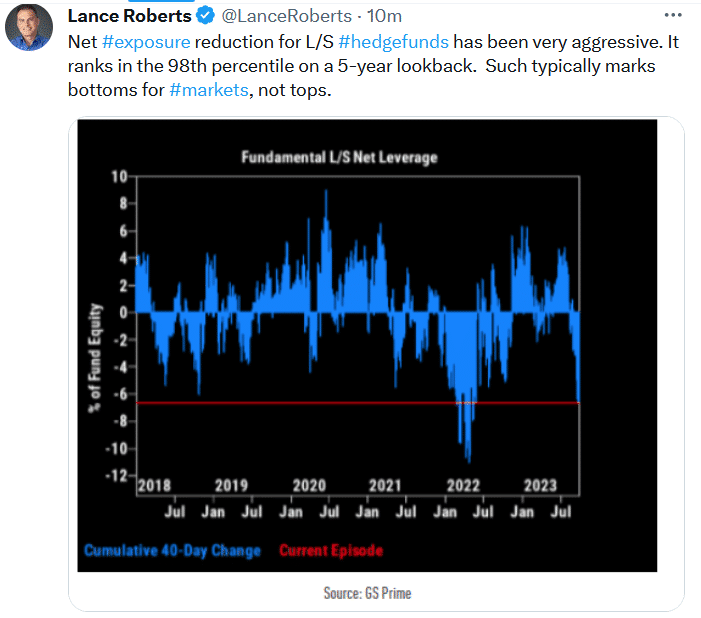
Please subscribe to the daily commentary to receive these updates every morning before the opening bell.
If you found this blog useful, please send it to someone else, share it on social media, or contact us to set up a meeting.
Post Views: 7
2023/09/29




